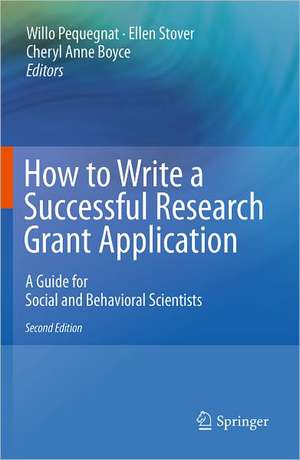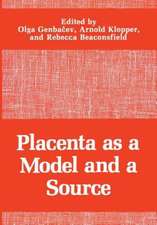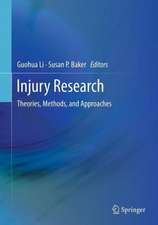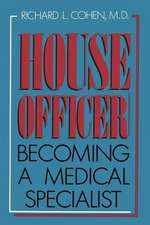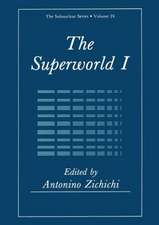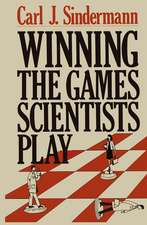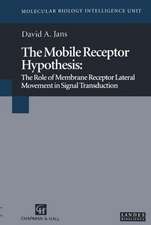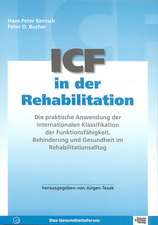How to Write a Successful Research Grant Application: A Guide for Social and Behavioral Scientists
Editat de Willo Pequegnat, Ellen Stover, Cheryl Anne Boyceen Limba Engleză Paperback – 13 oct 2010
Preț: 785.56 lei
Preț vechi: 826.91 lei
-5% Nou
Puncte Express: 1178
Preț estimativ în valută:
150.32€ • 157.67$ • 125.14£
150.32€ • 157.67$ • 125.14£
Carte tipărită la comandă
Livrare economică 01-15 aprilie
Preluare comenzi: 021 569.72.76
Specificații
ISBN-13: 9781441914538
ISBN-10: 1441914536
Pagini: 386
Ilustrații: XXXI, 300 p.
Dimensiuni: 155 x 235 x 22 mm
Greutate: 0.59 kg
Ediția:2nd ed. 2011
Editura: Springer Us
Colecția Springer
Locul publicării:New York, NY, United States
ISBN-10: 1441914536
Pagini: 386
Ilustrații: XXXI, 300 p.
Dimensiuni: 155 x 235 x 22 mm
Greutate: 0.59 kg
Ediția:2nd ed. 2011
Editura: Springer Us
Colecția Springer
Locul publicării:New York, NY, United States
Public țintă
ResearchCuprins
Part I: Grantsmanship and the Grant Review and Management Process.- Research Priorities and Emerging Issues.- Children, Women and Ethnic Minorities In Research.- Grantsmanship.- Program Announcements and Requests For Research Applications.- Selecting the Appropriate Research Mechanism.- Selecting Issues and Hypothesis for a Research Study.- Electronic Submission of Grant Proposal.- The Review Process.- Common Mistakes in Developing a Grant.- Interpreting Your Summary Statement.- The Award Process.- Managing a Grant.- Part II: Developing Sections of Your Research Application.- Developing a Theoretical Framework and Rationale for a Research Proposal.- How Do You Formulate a Testable Hypothesis?.- Qualitative Inquiry.- Using Technology and the Internet in Research.- Designing an Intervention Study.- Designing an Adequate Control Group.- Designing a Training Grant Application (Fs, Ks, Ts, R36s).- Assessment.- IRBs and Human Subjects Issues (DSMBs).- Conflict of Interest and Disclosure.- Community Based Collaborations.- Animal Welfare and Behavior.- Integrating Biological and Genetic Components.- Biographic Sketches of Senior/Key Persons.- Developing the Data Analytic Plan.- Developing a Budget and Financial Justification.- Quality Control/Quality Assurance Program.- SBIR/STTP.- Part III: Disseminating Your Research.- Public Access for Publications.- Disseminating Findings to Communities.- Data Sharing.- Appendix A: Funded Research Proposal (including data analytic plan and budget justification). - Appendix B: Charts, Timelines, and Other Visual Aids.- Appendix C: Links to More Information (Federal, State and Other).
Notă biografică
Willo Pequegnat is Associate Director of the International AIDS Prevention Research in the NIMH Center for Mental Health Research on AIDS at the National Institutes of Health (NIH).
Ellen Stover is Director of the Division of AIDS and Health and Behavior Research at the National Institute of Mental Health.
Cheryl Boyce is Associate Director for Pediatric Research Training and Career Development and Chief, Child Abuse and Neglect Program at the National Institute of Mental Health.
Ellen Stover is Director of the Division of AIDS and Health and Behavior Research at the National Institute of Mental Health.
Cheryl Boyce is Associate Director for Pediatric Research Training and Career Development and Chief, Child Abuse and Neglect Program at the National Institute of Mental Health.
Textul de pe ultima copertă
How to Write a Successful Research Grant Application
A Guide for Social and Behavioral Scientists, 2nd Edition
By Willo Pequegnat, Ellen Stover, and Cheryl Boyce
National Institute of Mental Health, Rockville, MD, USA
Over the last fifty years behavioral and medical research has been generously supported by the federal government, private foundations, and other philanthropic organizations contributing to the development of a vibrant public health system both in the United States and worldwide. However, these funds are dwindling and to stay competitive, investigators must understand the funding environment and know how to translate their hypotheses into research grant applications that reviewers evaluate as having scientific merit.
The Second Edition of How to Write a Successful Research Grant Application is the only book of its kind written by federal research investigators which provides technical assistance for researchers applying for biobehavioral and psychosocial research funding and can give them an edge in this competitive environment. The book provides invaluable tips on all aspects of the art of grantsmanship, including: how to determine research opportunities and priorities, how to develop the different elements of an application, how to negotiate the electronic submission and review processes, and how to disseminate the findings. Charts, visual aids, Web links, an extensive real-world example of a research proposal with budget, and a "So You Were Awarded Your Grant—Now What?" chapter show prospective applicants how to:
A Guide for Social and Behavioral Scientists, 2nd Edition
By Willo Pequegnat, Ellen Stover, and Cheryl Boyce
National Institute of Mental Health, Rockville, MD, USA
Over the last fifty years behavioral and medical research has been generously supported by the federal government, private foundations, and other philanthropic organizations contributing to the development of a vibrant public health system both in the United States and worldwide. However, these funds are dwindling and to stay competitive, investigators must understand the funding environment and know how to translate their hypotheses into research grant applications that reviewers evaluate as having scientific merit.
The Second Edition of How to Write a Successful Research Grant Application is the only book of its kind written by federal research investigators which provides technical assistance for researchers applying for biobehavioral and psychosocial research funding and can give them an edge in this competitive environment. The book provides invaluable tips on all aspects of the art of grantsmanship, including: how to determine research opportunities and priorities, how to develop the different elements of an application, how to negotiate the electronic submission and review processes, and how to disseminate the findings. Charts, visual aids, Web links, an extensive real-world example of a research proposal with budget, and a "So You Were Awarded Your Grant—Now What?" chapter show prospective applicants how to:
- Formulate a testworthy—and interesting—hypothesis.
- Select the appropriate research mechanism.
- Avoid common pitfalls in proposal writing.
- Develop an adequate control group.
- Conduct a rigorous qualitativeinquiry.
- Develop a budget justification of costs.
- Develop a human subjects of animal welfare plan.
- Write a data analytic plan.
- Design a quality control/assurance program.
- Read between the lines of a summary of the review of your application.
Caracteristici
The only book written by federal personnel and research investigators who have participated in the process of reviewing research grants Includes insider tips on grantsmanship Includes an example of a successful research application that was reviewed and is currently being conducted, and a taxonomy of common mistakes identified in grant review Extensively revised and updated 2nd edition adds new chapters on grant management and study design Includes supplementary material: sn.pub/extras
